 W
WThe Anglo–Dutch Wars were a series of conflicts mainly fought between the Dutch Republic and England. The first three occurred in the second half of the 17th century over trade and overseas colonies, while the fourth was fought a century later. Almost all the battles were naval engagements.
 W
WThe First Anglo-Dutch War, or simply the First Dutch War, was a conflict fought entirely at sea between the navies of the Commonwealth of England and the United Provinces of the Netherlands. It was largely caused by disputes over trade, and English historians also emphasise political issues. The war began with English attacks on Dutch merchant shipping, but expanded to vast fleet actions. Although the English Navy won most of these battles, they only controlled the seas around England, and after the tactical English victory at Scheveningen, the Dutch used smaller warships and privateers to capture numerous English merchant ships. Therefore, by November 1653 Cromwell was willing to make peace, provided the House of Orange was excluded from the office of Stadtholder. Cromwell also attempted to protect English trade against Dutch competition by creating a monopoly on trade between England and her colonies. It was the first of the four Anglo-Dutch Wars.
 W
WThe Second Anglo-Dutch War or the Second Dutch War was a conflict between England and the Dutch Republic partly for control over the seas and trade routes, where England tried to end the Dutch domination of world trade during a period of intense European commercial rivalry, but also as a result of political tensions. After initial English successes, the war ended in a Dutch victory. It was the second of a series of naval wars fought between the English and the Dutch in the 17th and 18th centuries.
 W
WThe Third Anglo-Dutch War, or Third Dutch War, was a naval conflict between England, in alliance with France, and the Dutch Republic. It lasted from 7 April 1672 to 19 February 1674, and was a subsidiary of the wider 1672 to 1678 Franco-Dutch War.
 W
WThe Fourth Anglo-Dutch War was a conflict between the Kingdom of Great Britain and the Dutch Republic. The war, contemporary with the War of American Independence, broke out over British and Dutch disagreements on the legality and conduct of Dutch trade with Britain's enemies in that war.
 W
WThe Articles of Capitulation on the Reduction of New Netherland was a document of surrender signed on September 6, 1664 handing control of the Dutch Republic's colonial province New Netherland to the Kingdom of England.
 W
WThe conquest of New Netherland occurred in 1664 as an expedition led by Richard Nicolls that arrived in New York Harbor effected a peaceful capture of New Amsterdam, and the Articles of Surrender of New Netherland were agreed. The conquest was mostly peaceful in the rest of the colony as well, except for some fighting in New Amstel.
 W
WThe conquest of New Netherland occurred in 1664 as an expedition led by Richard Nicolls that arrived in New York Harbor effected a peaceful capture of New Amsterdam, and the Articles of Surrender of New Netherland were agreed. The conquest was mostly peaceful in the rest of the colony as well, except for some fighting in New Amstel.
 W
WThe Recapture of Fort Zeelandia or the Seizure of Fort Zeelandia was a minor military action on the 13 October 1667 at the end of the Second Anglo-Dutch War in which an English force under command of Rear Admiral Sir John Harman assaulted and took by force the Dutch settlement and fortress of Zeelandia under Maurits de Rame. The English occupied the area but only for a short while as news of the peace of Breda arrived. The Dutch had captured the Zeelandia earlier in the year, and the English recapture was the last battle before the war's end between England and the Dutch Republic.
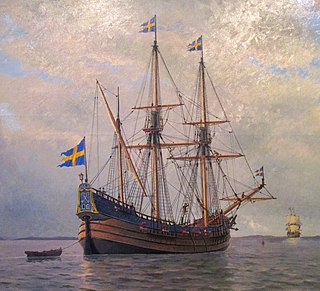 W
WKalmar Nyckel was a Swedish ship built by the Dutch famed for carrying Swedish settlers to North America in 1638, to establish the colony of New Sweden. The name Kalmar Nyckel comes from the Swedish city of Kalmar and nyckel meaning key in Swedish. The name was also a tribute to Kalmar Castle which was a symbol of power during the time of the Swedish Empire when Sweden was a military great power. A replica of the ship was launched at Wilmington, Delaware, in 1997.
 W
WThe Battle of Martinique also known as Harman's Martinican Bonfire was a major naval battle fought in the Caribbean island of Martinique at St Pierre, from 30 June to 7 July 1667 that came towards the end of the Second Anglo-Dutch War. A French merchantile fleet anchored in the bay led by Joseph-Antoine Le Fèvre de la Barre were attacked by an English fleet led by Admiral Sir John Harman. The English were victorious, virtually wiping out the French merchant fleet in the Caribbean, which was unaccompanied by any naval vessels, and enabled them to secure their domination and position in the West Indies despite being at the war's end.
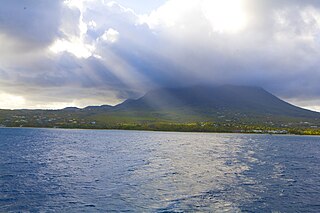 W
WThe Battle of Nevis on 20 May 1667 was a confused naval clash in the Caribbean off the Island of Nevis during the closing stages of the Second Anglo-Dutch War between an English squadron and an Allied Franco-Dutch fleet intent on invading the island. The battle ended up being an English victory in that prevented a Franco-Dutch invasion of Nevis.
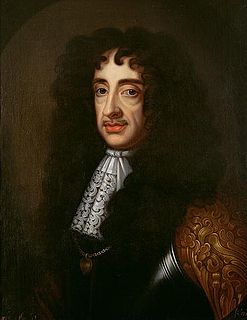 W
WThe Treaty of Dover, also known as the Secret Treaty of Dover, was a treaty between England and France signed at Dover on 1 June 1670. It required that Charles II of England would convert to the Roman Catholic Church at some future date and that he would assist Louis XIV with 60 warships and 4,000 soldiers to help in France's war of conquest against the Dutch Republic. In exchange, Charles would secretly receive a yearly pension of £230,000, as well as an extra sum of money when Charles informed the English people of his conversion, and France would send 6,000 French troops if there was ever a rebellion against Charles in England. The secret treaty was signed by Arlington, Arundell, Clifford, and Bellings for England and Colbert de Croissy for France. The two kings exchanged letters of ratification and kept secret the existence of the treaty. A public treaty of Dover was also negotiated, but it was a screen designed for propaganda purposes and to hide the religious dimension of the secret treaty. The Third Anglo-Dutch War was a direct consequence of this treaty. The actual treaty was published by historians a century later.
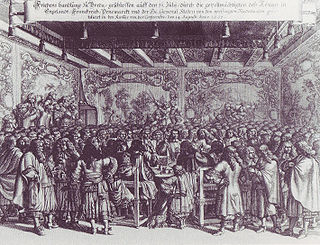 W
WThe Peace of Breda, or Treaty of Breda was signed in the Dutch city of Breda, on 31 July 1667. It consisted of three separate treaties between England and each of its opponents in the Second Anglo-Dutch War: the Dutch Republic, France, and Denmark–Norway. It also included a separate Anglo-Dutch commercial agreement.
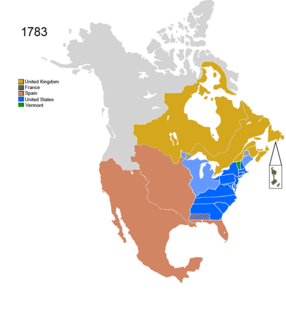 W
WThe Peace of Paris of 1783 was the set of treaties that ended the American Revolutionary War. On 3 September 1783, representatives of King George III of Great Britain signed a treaty in Paris with representatives of the United States of America—commonly known as the Treaty of Paris (1783)—and two treaties at Versailles with representatives of King Louis XVI of France and King Charles III of Spain—commonly known as the Treaties of Versailles (1783). The previous day, a preliminary treaty had been signed with representatives of the States General of the Dutch Republic, but the final treaty which ended the Fourth Anglo-Dutch War was not signed until 20 May 1784; for convenience, however, it is included in the summaries below.
 W
WThe Treaty of Westminster, concluded between the Lord Protector of the English Commonwealth, Oliver Cromwell, and the States General of the United Netherlands, was signed on 5/15 April 1654. The treaty ended the First Anglo-Dutch War (1652–1654). The treaty is otherwise notable because it is one of the first treaties implementing international arbitration as a method of conflict resolution in early modern times. A secret clause, obliging the States of Holland to enact the Act of Seclusion, played an important part in Dutch internal politics during the First Stadtholderless Period.